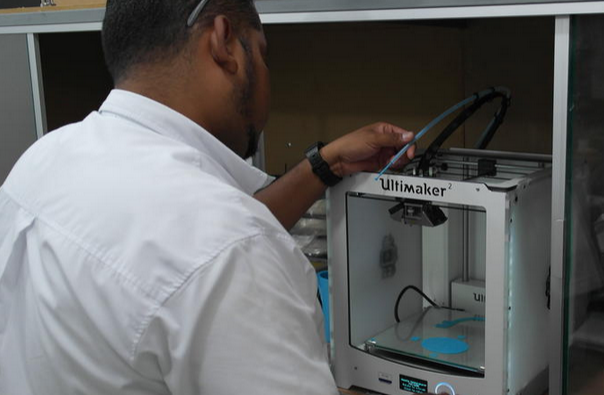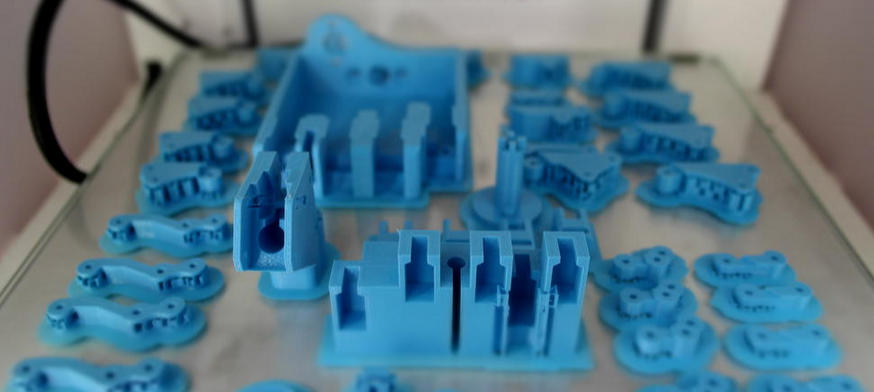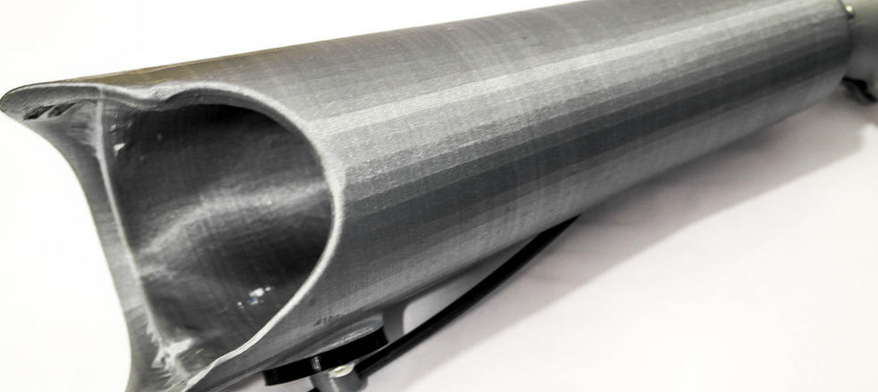
Dr. Nick Dechev (VHP) and Patrick Mathay (Range of Motion Project) fit a prototype device to a phase one trial participant in Guatemala. (Photo: VHP)
Millions of people around the world are affected by the absence of an upper limb–a hand, or partial or full arm–and the vast majority of these individuals live in developing nations where prosthetics can be difficult to come by, and often rudimentary when available. By some estimates, 8 out of 10 people who would benefit from a prosthetic hand or arm reside in these industrialized areas. This means that approximately three million people around the globe could benefit from more organizations like e-NABLE, whose mission it is to expand availability of low-cost, 3D printed prosthetic hands. 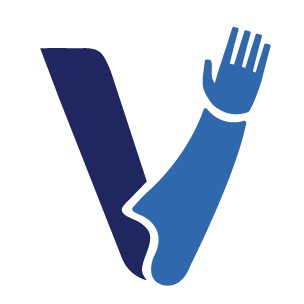 Thankfully, other like-minded individuals are discovering the capabilities of 3D printing when applied to prosthetics, and the up-and-coming Victoria Hand Project is seeking to bring prosthetics to those who would benefit most from them.
Thankfully, other like-minded individuals are discovering the capabilities of 3D printing when applied to prosthetics, and the up-and-coming Victoria Hand Project is seeking to bring prosthetics to those who would benefit most from them.
“Our mission is to provide upper-limb prosthetics to amputees in need, regardless of their socio-economic status,” the Project page clearly states.
With such a mission statement, there’s no guesswork involved as to the mission of the Victoria Hand Project (VHP). Their namesake prosthesis, the Victoria Hand, is set to address what the dedicated team comprising the VHP have seen as a major problem: access to care. Led by Dr. Nick Dechev, a professor and director of University of Victoria’s Biomedical Engineering program, the VHP seeks to bring together advanced prosthetics kitted with the latest in technology and low-cost manufacturing.
“We are just starting to make ourselves publicly known what we have been doing for the last year. It’s really exciting stuff which I think the 3D community will love,” Joshua Coutts, the lead designer with VHP, told 3DPrint.com.
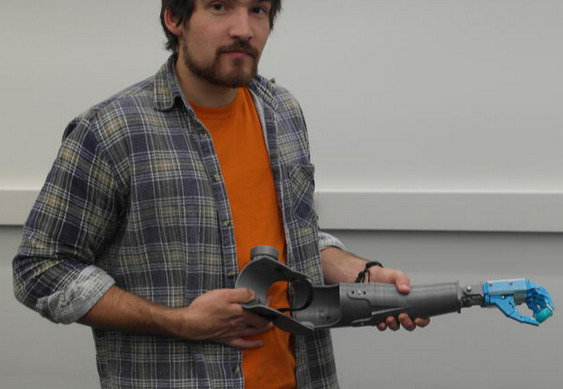
Josh Coutts with an early prototype
The VHP is focusing on the developing world, starting with intensive projects in Guatemala and Nepal, where they are already working with amputees.
“We have formed partnerships with experienced, established prosthetic care providers within Guatemala and Nepal. These partners, Range of Motion Project (Guatemala) and the Nepal Orthopaedic Hospital, provide the clinical resource, train their staff in fitting the 3D printed prosthetic, and provide the clinical fitting expertise and local knowledge. VHP funds the equivalent of one half-time clinician – helping to increase the clinic capacity – and provides ongoing technical support to both the print center and the clinic,” the VHP describes.
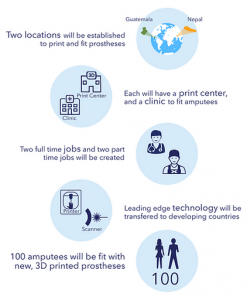 Through partnering with local organizations, the VHP introduces 3D printing technology. Equipping the organization with tools, training, and technical know-how, the intention is to create a full-time, local 3D print center that can address the community’s needs. By not just dropping off the prosthetics and leaving, the VHP team clearly adheres to the old “teach a man to fish” adage by ensuring that the skills are developed to keep the local 3D print center running after the teachers return to North America.
Through partnering with local organizations, the VHP introduces 3D printing technology. Equipping the organization with tools, training, and technical know-how, the intention is to create a full-time, local 3D print center that can address the community’s needs. By not just dropping off the prosthetics and leaving, the VHP team clearly adheres to the old “teach a man to fish” adage by ensuring that the skills are developed to keep the local 3D print center running after the teachers return to North America.
The VHP, based in Victoria, British Columbia, Canada, is comprised of a team of dedicated individuals ranging from high school students to biomedical and mechanical engineers. A significant portion of the team members are students, aged high school through graduate school, underscoring the critical nature of education in the process.
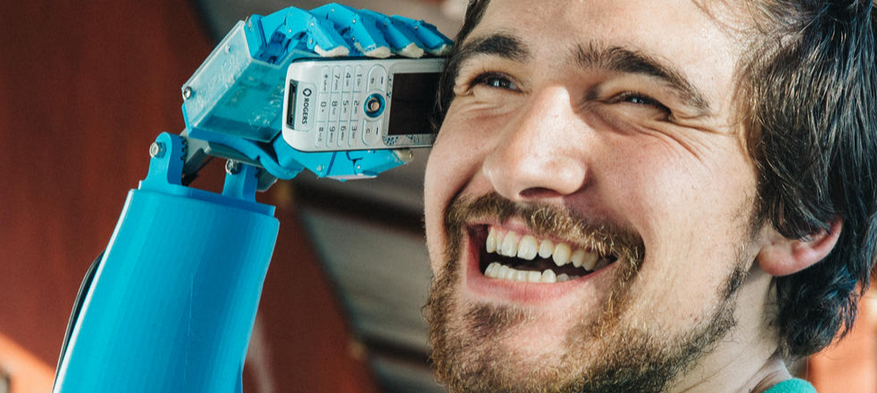 To create the Victoria Hand, an amputee going through the 3D print center will have a plaster impression made of their limb. The mold will then be scanned via 3D laser scanning technology, and from this scan, along with detailed measurements, the technicians at the center will 3D print the components of the Victoria Hand, assemble them, and bring them back to the clinic. There, the device will be fitted to the patient, at which time the amputee will also receive full training on their new 3D printed hand–all just about one week after first coming in to the clinic.
To create the Victoria Hand, an amputee going through the 3D print center will have a plaster impression made of their limb. The mold will then be scanned via 3D laser scanning technology, and from this scan, along with detailed measurements, the technicians at the center will 3D print the components of the Victoria Hand, assemble them, and bring them back to the clinic. There, the device will be fitted to the patient, at which time the amputee will also receive full training on their new 3D printed hand–all just about one week after first coming in to the clinic.
Key components and features of the custom fitted Victoria Hand prosthesis system include: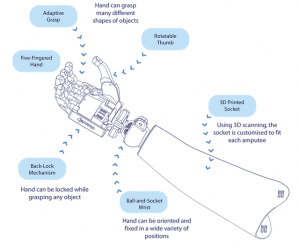
- 3D printed socket
- Ball-and-socket wrist with a full range of anatomical motion and ability to lock in position
- Adaptive grasp suitable for delicate or unusually shaped objects
- Anatomical appearance
- Back-lock mechanism to lock around the grasped object
- Rotatable thumb with a 120° range of motion
The focus at VHP is a very “for the people, by the people” philosophy, through which the team seeks to equip local communities to serve their own populations. By designing a highly functioning prosthesis and training local technicians, the VHP is, along with its important partner organizations, contributing to local manufacturing and economies, providing jobs as well as a sense of purpose and assistance.
Is an organization like the VHP one you’d like to get involved with? Have you 3D printed a prosthetic before, or know someone who has?
Let us know your thoughts on this organization’s mission in the Victoria Hand Project forum thread over at 3DPB.com. Check out more photos of the Victoria Hand below (all photos from the VHP).
Subscribe to Our Email Newsletter
Stay up-to-date on all the latest news from the 3D printing industry and receive information and offers from third party vendors.
You May Also Like
Profiling a Construction 3D Printing Pioneer: US Army Corps of Engineers’ Megan Kreiger
The world of construction 3D printing is still so new that the true experts can probably be counted on two hands. Among them is Megan Kreiger, Portfolio Manager of Additive...
US Army Corps of Engineers Taps Lincoln Electric & Eaton for Largest 3D Printed US Civil Works Part
The Soo Locks sit on the US-Canadian border, enabling maritime travel between Lake Superior and Lake Huron, from which ships can reach the rest of the Great Lakes. Crafts carrying...
Construction 3D Printing CEO Reflects on Being Female in Construction
Natalie Wadley, CEO of ChangeMaker3D, could hear the words of her daughter sitting next to her resounding in her head. “Mum, MUM, you’ve won!” Wadley had just won the prestigious...
1Print to Commercialize 3D Printed Coastal Resilience Solutions
1Print, a company that specializes in deploying additive construction (AC) for infrastructure projects, has entered an agreement with the University of Miami (UM) to accelerate commercialization of the SEAHIVE shoreline...


